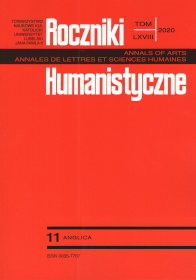The Maps of Inner Space: J. G. Ballard’s “The Reptile Enclosure” in the Light of R. D. Laing’s The Politics of Experience
The Maps of Inner Space: J. G. Ballard’s “The Reptile Enclosure” in the Light of R. D. Laing’s The Politics of Experience
Author(s): Dominika OramusSubject(s): Language and Literature Studies, Studies of Literature, British Literature
Published by: Towarzystwo Naukowe KUL & Katolicki Uniwersytet Lubelski Jana Pawła II
Keywords: J. G. Ballard; R. D. Laing; inner space; science fiction
Summary/Abstract: In 1962, J. G. Ballard wrote his artistic manifesto “Which Way to Inner Space,” in which he claims that ambitious science fiction should abandon repetitive space stories and investigate the inner space of the human mind. Two years later, in 1964, his short story “The Reptile Enclosure” was published. While the story appears to focus on the launch of a new satellite, it is really a profound study of “inner space,” the timeless mindscape of contemporary humans inherited from the distant past as it depicts instincts and unconscious urges dating back to the early period of Cro-Magnon.My aim in this paper is to read “The Reptile Enclosure” in the light of Ballard’s manifesto and in the context of R. D. Laing’s long paper “The Politics of Experience.” Both Ballard and Laing attempt to explain the intricacies of human behaviour by referring to our evolutionary past, a physical and social milieu that no longer exists but which they believe to be preserved in our latent collective memory.
Journal: Roczniki Humanistyczne
- Issue Year: 68/2020
- Issue No: 11
- Page Range: 211-224
- Page Count: 14
- Language: English

